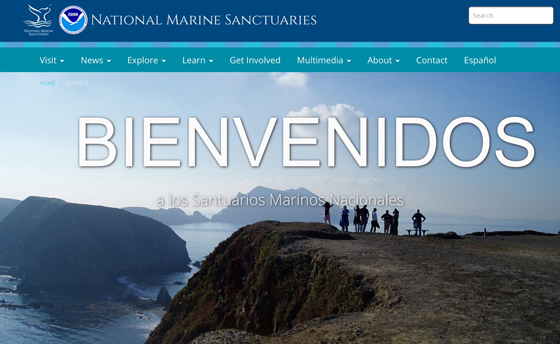National Litter Clean-up Campaign This Sunday

The Bay of Loreto National Park, Eco-Alianza de Loreto, and homeowner groups in Loreto Bay and Nopoló invite the community to participate in the national campaign “Limpiemos Nuestro México” to clean up litter on February 25 beginning at 8 a.m. The event officially continues until 1 p.m., but participants can stay as long as they like.
Tens of thousands of citizens nationwide will participate in this annual event. Please bring work gloves, large garbage bags, water/drink for yourself, sun protection, and working shoes. Meet at 8 a.m. at Estero Las Garzas or Playa La Negrita. Homeowner groups in Loreto Bay and Nopoló will meet up at 8 a.m. by the Fonatur landmark at the northern entrance to the highway (park on Misión San Ignacio).
Eco-Alianza also is working through its connections in the schools, as well as with the network of environmental educators (R.E.A.L.), to encourage groups of students and teachers to participate. For more information on the Limpiemos Nuestro México campaign, visit:
http://www.limpiemosnuestromexico.com/
![]()
Grupo Tortuguero 20th Anniversary Celebrates Success of Community-Based Sea Turtle Conservation
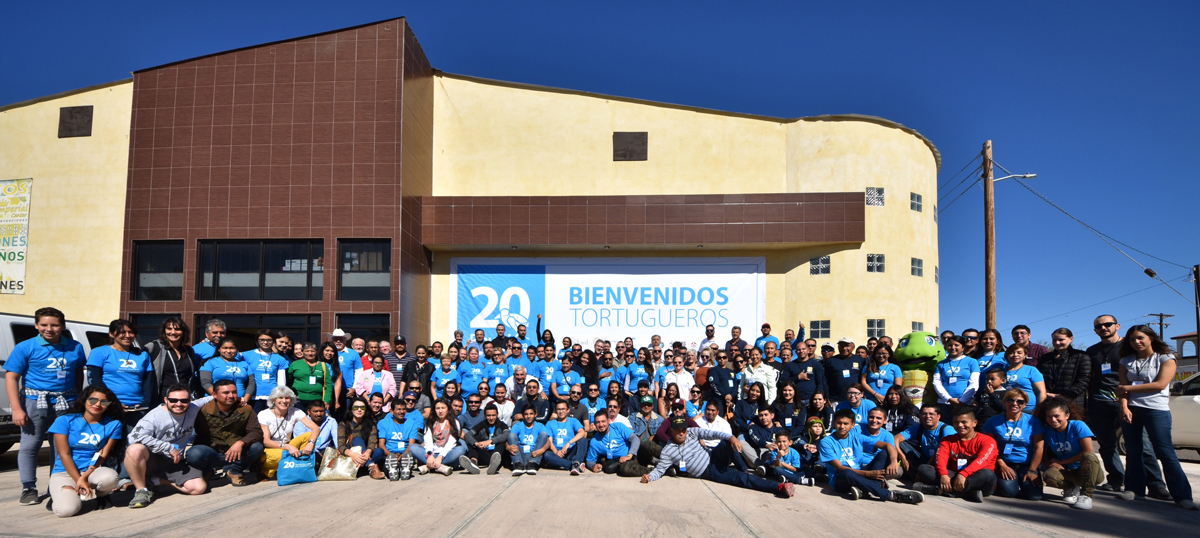
Photo courtesy of Grupo Tortuguero
More than 175 sea turtle enthusiasts from 50 groups in six northwestern México states convened in Loreto at the end of January to celebrate their successes and to learn from their challenges in their quest to advance sea turtle conservation. Attendees at the three-day conference included representatives of NGOs, community-based conservation groups, educational institutions, government agencies, students, fishermen, scientists from near and far, and volunteers.
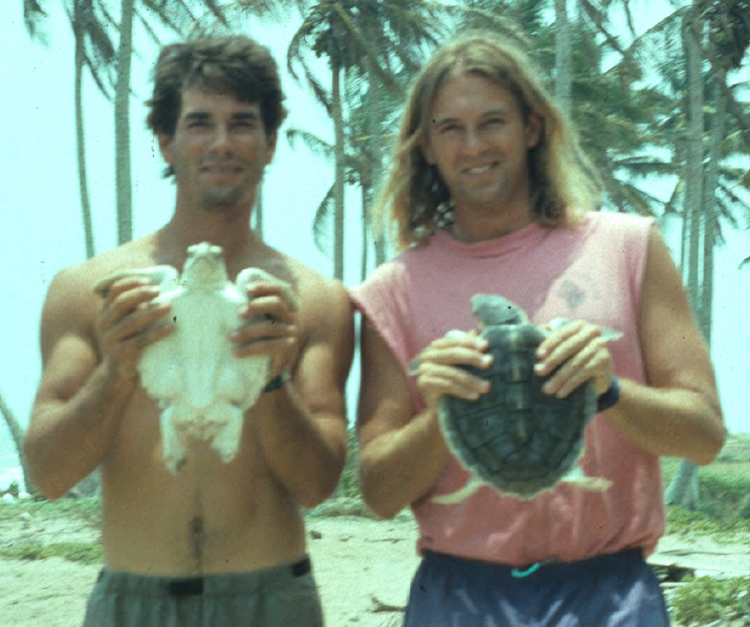
Grupo Tortuguero began 20 years ago, and co-founders Dr. Wallace “Jay” Nichols and Dr. Jeff Seminoff kicked off the annual sea turtle gathering with keynote presentations giving an overview of their efforts. The presentations were laden with both nostalgia and facts and figures — a tale of how communities one by one stepped up to the plate to shift the cultural view towards sea turtles, to change behaviors, to embrace the new laws, and to use marine science in helping each species of sea turtle to find its path towards recovery. The presentations pulled no punches in showing a history of decimation caused mostly by human factors. But they also exhibited strong signs of rebound, aided by regional and worldwide conservation efforts. The underlying message — what people are doing is helping, but there’s still more to be done!
Considering that Grupo Tortuguero was founded here in Loreto, said Eco-Alianza Board of Directors Treasurer Linda Kinninger, it was especially appropriate for this hallmark 20th anniversary gathering to take place here. The entire group was treated to a welcome dinner at Eco-Alianza, sponsored by the Anthony and Linda Kinninger Family Trust and the Kathryn and Charles Mitchell Fund.
The next morning, the anniversary took the form of the group’s typical annual gatherings — 10-minute reports by each group, including standardized statistics on conservation and educational efforts, and sharing of best practices. Through the course of the reports, there was occasional mention of each of the historical challenges to sea turtle conservation that Nichols and Seminoff mentioned in their opening remarks — horses or cars running over nests or hatchlings; coyotes, dogs, crows, gulls, crabs, or other predators digging up nests or eating hatchlings; humans stealing eggs or eating adult turtles; hurricanes or tides or other weather inundating nests with seawater; tourist developments and activities impacting nesting or hatching; trash on beaches or nets or plastic trash in the water impacting adults or hatchlings.
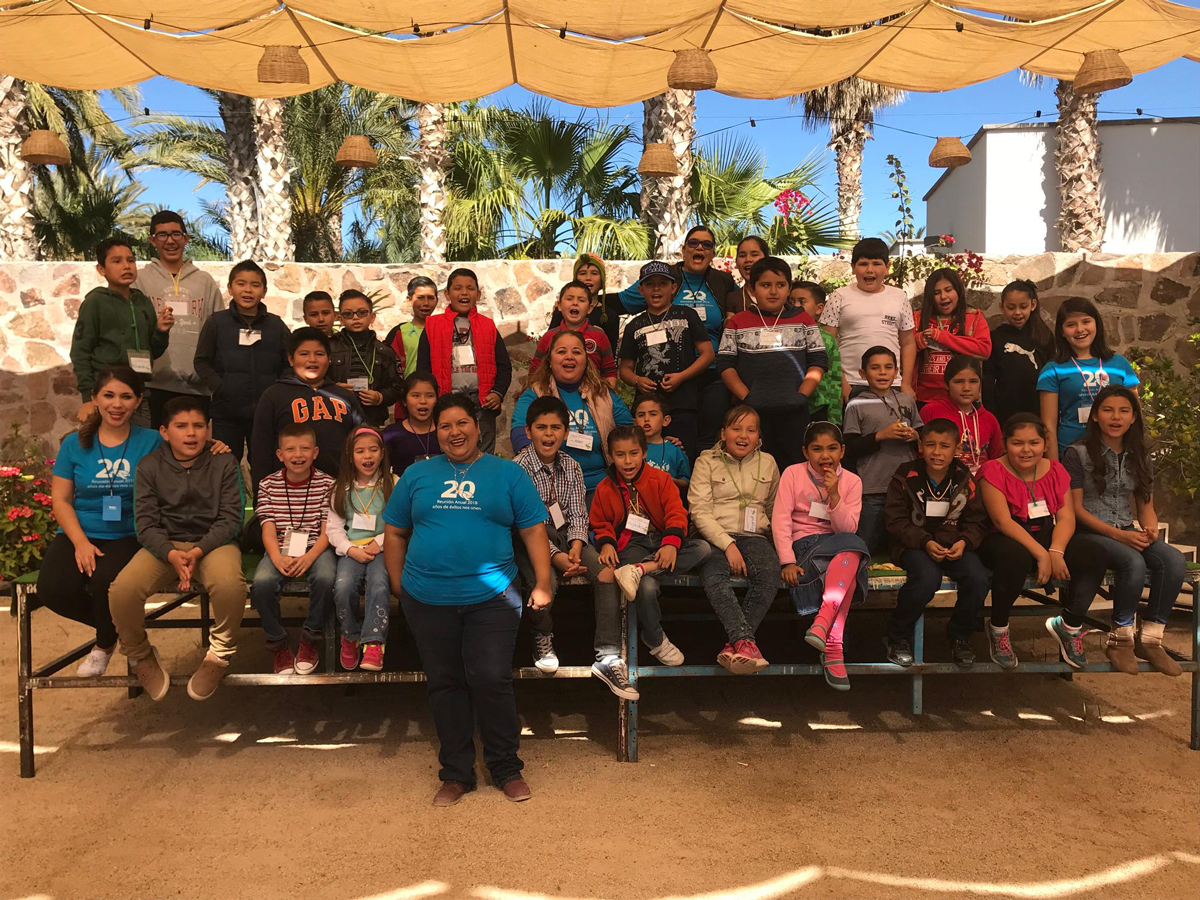
Considering that in nature baby sea turtles already run a gauntlet of predators, need to find shelter and food without any apparent guidance, don’t generally reach sexual maturity for at least six or seven years, and now face a plethora of human-caused hazards, it’s clear that these species need all the help they can get. And yet, the conservation numbers overall are positive, largely due to the efforts of dozens of community groups getting involved. It was pointed out that Grupo Tortuguero is a loose conglomeration of more than 50 groups — an unusual conservation model relying largely on informal information sharing and community involvement.
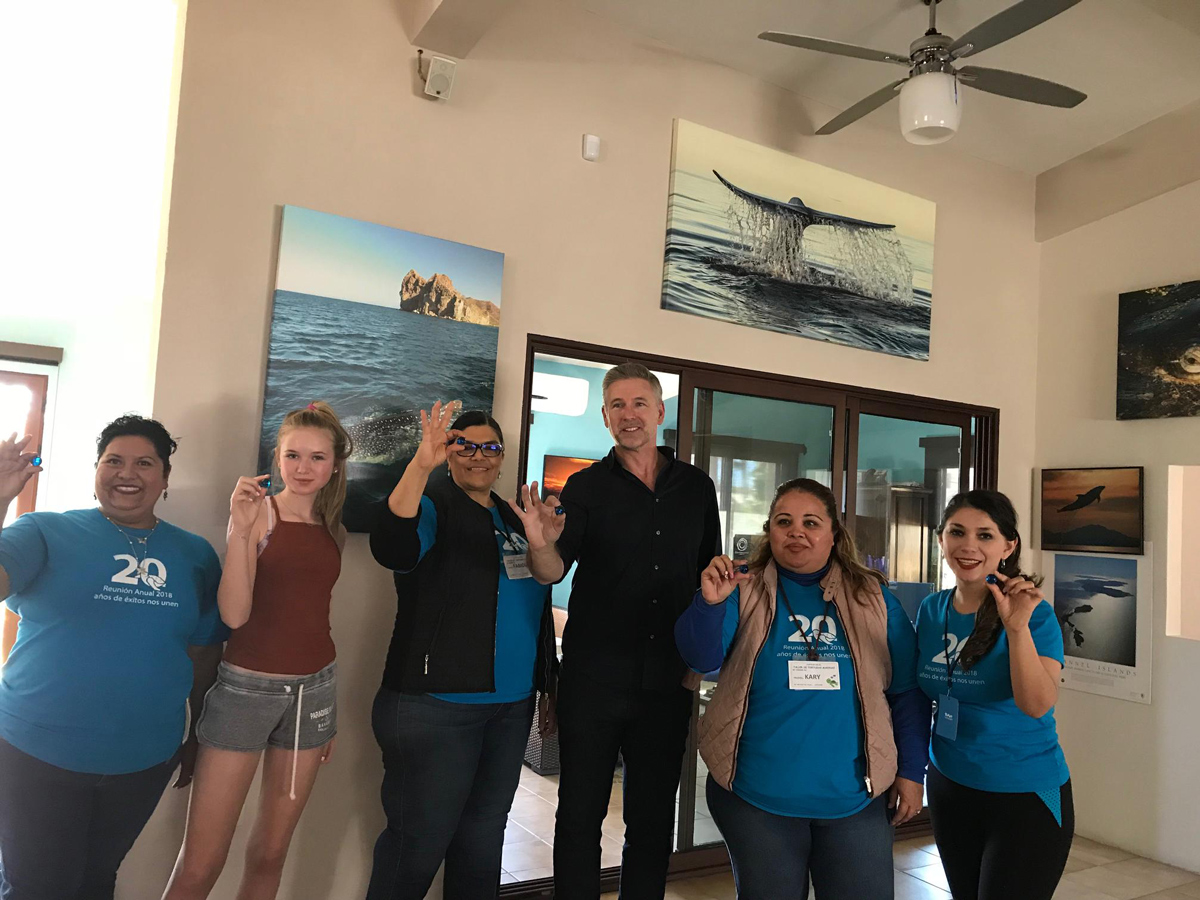
During the weekend, “Jay” Nichols, now an internationally recognized conservationist and the author of “Blue Mind,” exhibited what nearly every presenter emphasized — that along with community conservation action, educating the next generation is a key to conservation success. Twice he came to Eco-Alianza and took active part in educating and inspiring Loreto’s children and teachers.
For more information:
grupotortuguero.org
wallacejnichols.org
![]()
Third Annual Blue Whale Festival: March 8, 9, 10

Photo courtesy of Richard Jackson Photography
Planning continues for this year’s Blue Whale Festival, which is now officially scheduled for March 8, 9, and 10. The coronation of the festival queen will take place March 8, and sports tournaments for volleyball and soccer will take place all three days.
Eco-Alianza will be involved with presenting environmental education programs about blue whales on March 9 for the children of Ligui and Ensenada Blanca. On March 10, at 10 a.m., local children will present a free program about blue whales to the general public at Eco-Alianza’s CenCoMA headquarters on Hidalgo.
Watch Eco-Alianza’s Facebook page and social media for announcements of additional festival activities, which are still being finalized.
![]()
Eco-Alianza Now Planning 6th Annual Recyclathon
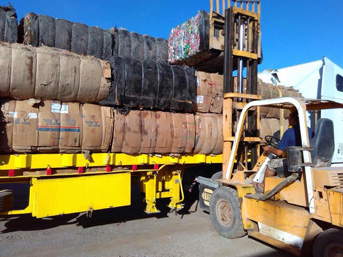
Eco-Alianza staff photo
Edna Peralta, Eco-Alianza’s Education Coordinator, recently announced that “in honor of the turtles” she is working to make this year’s Recyclathon more impactful than ever. The event is part of Eco-Alianza’s RRR campaign, one of the goals of which is to divert plastics away from the landfill and the sea, and towards recycling.
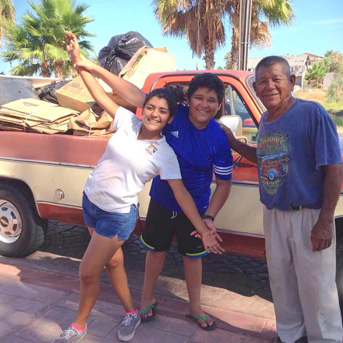 Three-person teams recycle plastic, glass, cardboard, and paper, and compete for prizes at the end of a several-weeks-long effort. In the past, teams have turned in materials weekly, at a centralized “weigh-in” location. Peralta said the Recyclathon committee still is working out logistical details, but is actively seeking sponsors to donate team prizes.
Three-person teams recycle plastic, glass, cardboard, and paper, and compete for prizes at the end of a several-weeks-long effort. In the past, teams have turned in materials weekly, at a centralized “weigh-in” location. Peralta said the Recyclathon committee still is working out logistical details, but is actively seeking sponsors to donate team prizes.
Watch this space, Eco-Alianza’s social media, and other local media for team registration information, or contact Edna Peralta directly. And if you or your business are interested in supporting this worthwhile effort, and helping to motivate and inspire Loreto’s young people to embrace recycling enthusiastically, please contact Edna immediately!
Edna.Peralta@ecoalianzaloreto.net
![]()
Bird and Wetland Festival Raises Awareness, Inspires Conservation and Understanding
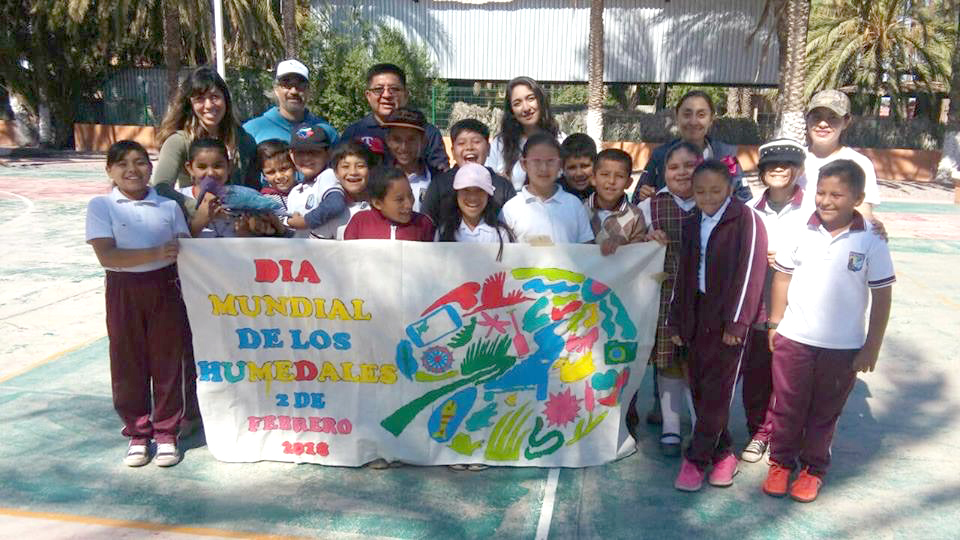
After learning about birds and wetlands, local children pose proudly with their banner and local educators.
Photo courtesy of REAL
In a location like Loreto, constantly being surrounded by scenes of natural beauty, it’s easy to forget for a moment that nearly every species that thrives here is reliant on a precarious balance of natural elements. Earlier this month, the 2nd annual Bird and Wetland Festival offered important reminders of the importance of wetlands in maintaining that balance.
Estuaries, arroyos, and canyon watercourses all combine with the ocean to nourish the amazing biodiversity of Loreto, part of the reason it was designated a “Ramsar” site, with wetlands of worldwide importance, in 2004. To learn more about the Ramsar Convention, visit Ramsar.org .

Educator Alma Rico, Eco-Alianza’s newest employee, helps children learn about the importance of wetlands.
Photo courtesy of REAL
The festival included classroom and in-the-field elements to drive home the importance and intense beauty of our local and migratory birds, and the wetlands that are critical to their survival.
![]()
U.S. National Marine Sanctuaries – Fascinating in English – Now in Spanish!
(Courtesy of NOAA)
Many Americans are aware of the 13 National Marine Sanctuaries (NMS), administered by the U.S. National Oceanic and Atmospheric Administration (NOAA). These Marine Protected Areas are the aquatic equivalent of U.S. National Parks, primarily protecting underwater natural resources. The closest NMS sanctuary to Loreto is the Channel Islands National Marine Sanctuary, which protects a six-mile zone surrounding the Channel Islands National Park (Sister Park of our own Parque Nacional Bahía de Loreto).
Earlier this month, after much effort, the website of the National Marine Sanctuaries went live in Spanish as well as English. Use the links below to learn about the sanctuary system, especially the Channel Islands National
Marine Sanctuary:
In Spanish: https://sanctuaries.noaa.gov/espanol/
In English: https://sanctuaries.noaa.gov/

![]()
Sea Sparkle Beats Red Tide Any Day

Sea Sparkle looks disturbingly like red tide to some observers.
Photos courtesy of Kevin Macpherson/Loreto Bay Village
VoiceLate last month, various social media sites around Loreto exploded with pictures like the one shown here, combined with a sense of panic from several commenters. We asked our resident water expert (and Advisory Board Member) Charles (Chuck) Mitchell about it, considering his many decades of experience with water quality and health issues. His answer in short — delight, not dread!
“It is not red tide. NO! It’s not sewage, it’s not bilge water, and it’s not pollution, and it’s not fish eggs… It is a windrow of the largest single cell organism in the world Noctiluca scintillans. During the calm nights the slight breezes sometimes carry this plankton to the shore line or to form drifting aggregations. The common name “sea sparkle” does not do justice to the brilliant bioluminescent effect this creature can produce when disturbed by a passing boat or a night time swimmer. They are truly amazing — capable of producing light but also making daily vertical migrations in the water column by changing density while feeding on phytoplankton. Please enjoy an illuminating midnight swim with Noctiluca!”
– Charles Mitchell
![]()
![]()
“Nature Notes” is a monthly short feature detailing some of the wondrous, seasonal activities taking place around us.
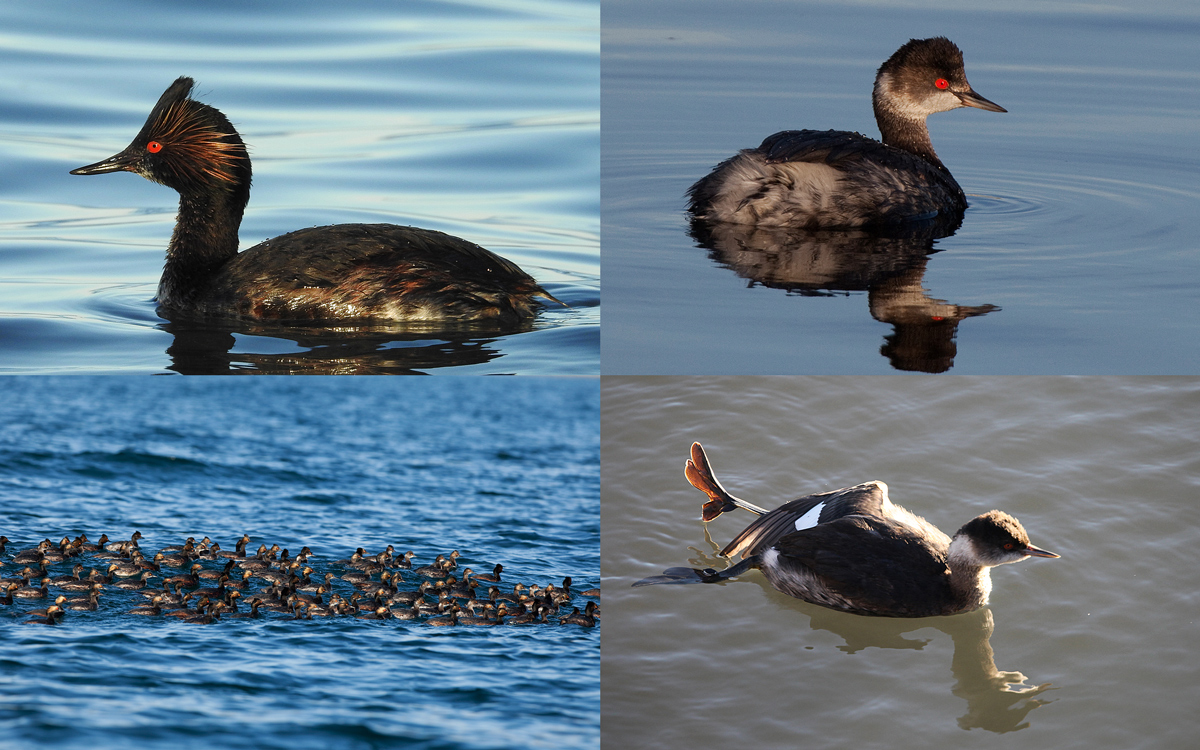
Photos, clockwise from top left: Adult in summer plumage.
Adult in winter plumage.
Winter adult showing lobed toes.
Late spring flock in open water
Photos courtesy of Tom Haglund/BCS Birds
Eared Grebes
By Tom Haglund
“Wow! Look at all those birds! Where? Uh, they were right there a second ago.”
Eared Grebes swim very well with their lobed toes instead of webbed feet. They dive in close synchronization and resurface the same. You can be looking at hundreds of them one second and at a smooth and empty water surface the next. Then, they are back on top all in a bunch again.
We’re getting into the time of year when dead ones start washing up on shore in sometimes alarming numbers. Seeing them like this is concerning to most people, and can cause many to seek a cause for the losses. There is not necessarily any sinister pollutant or microbe at work, they just simply die off in rather plain sight as a normal part of their life cycle. Some may be old and weak, and some may be young and inexperienced in the sometimes dangerous ways of Grebe life.
With a lifespan of less than seven years and migrations as long as 6,000 kilometers it is to be expected that we will encounter some evidence of their mortality. Added to this, they can be flightless for as much as ten months in a year. Several times each year they go through periods of rapid weight gain which render them completely unable to fly. Like many birds, they are also flightless during their molt. Flightless birds in open water are at the mercy of any strong wind that blows, and they can be tumbled and held under water by whitecaps and onshore surge.
Grebes often feed dangerously close to shore even in very rough shore break when algal mats are washed in with their loads of crustaceans and small fish still trying to hide in them.The Eared Grebe population is relatively stable at about 4 million individuals, so their conservation status is listed as a “species of least concern” by the International Union for the Conservation of Nature (IUCN).
![]()
Garage Sales Encourage “the Second R” of Ecology: Re-using or Repairing Household Items

“Reduce, Re-Use, and Recycle” has long been the “three R’s” credo of environmental and conservation groups worldwide. Eco-Alianza de Loreto for the last several years has supported the second R with a spring garage sale, but this year has decided to support garage sale efforts by two other worthwhile groups.
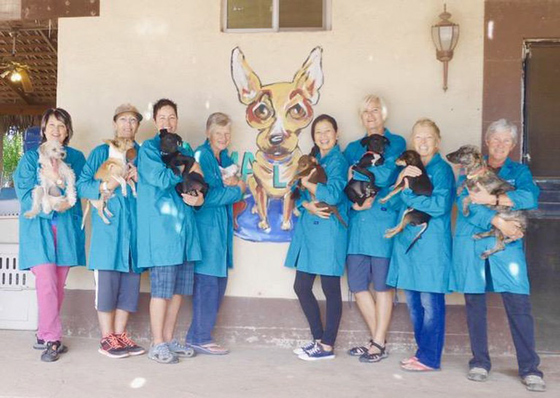
Photos courtesy of Animalandia
Animalandia will hold its yard sale on April 7, from 3 to 6 p.m. Watch social media and this space for additional details. As many supporters know, the group supports two additional “R’s” that also have positive environmental consequences. Animalandia focuses on Re-homing (or adopting out) the beautiful animals that exist here in Loreto, and also on Reducing the population of strays through support of affordable spay/neuter surgery. Watch local media for information about their garage sale.

The network of environmental educators (R.E.A.L.) also has been holding sporadic garage sales at Eco-Alianza to support their educational efforts. Watch Eco-Alianza’s social media and this space for information on how to support those efforts.
![]()
Save the Date! November 16 Gala

Photo courtesy of Richard Jackson Photography
We know your Eco-Alianza calendar is right there on the wall, so please put a Big Red Circle around Friday, November 16, the date of Eco-Alianza’s 11th Anniversary and Gala fundraising dinner. This year’s event will be simpler and shorter than last year’s 10th anniversary, but no less important. Preparations have already begun!
![]()
Save the Dates! March 23, March 24 One Ocean FilmFest

And while you’ve got your red pen and calendar out, plan to join Eco-Alianza for its One Ocean Film Festival on the evenings of March 23 and March 24. Inspirational and educational films about the Gulf of California and the ocean we share with the planet, will brighten up Eco-Alianza’s enchanting outdoor courtyard.
Different feature films and shorts each night will be accompanied by Q&A/ presentation/ discussions with insightful directors, Emmy-winning cinematographers, knowledgable marine biologists, and committed conservationists. Watch this space and Eco-Alianza’s social media pages for specific information as it becomes available. Definitely a “don’t miss” on March 23 and March 24.







